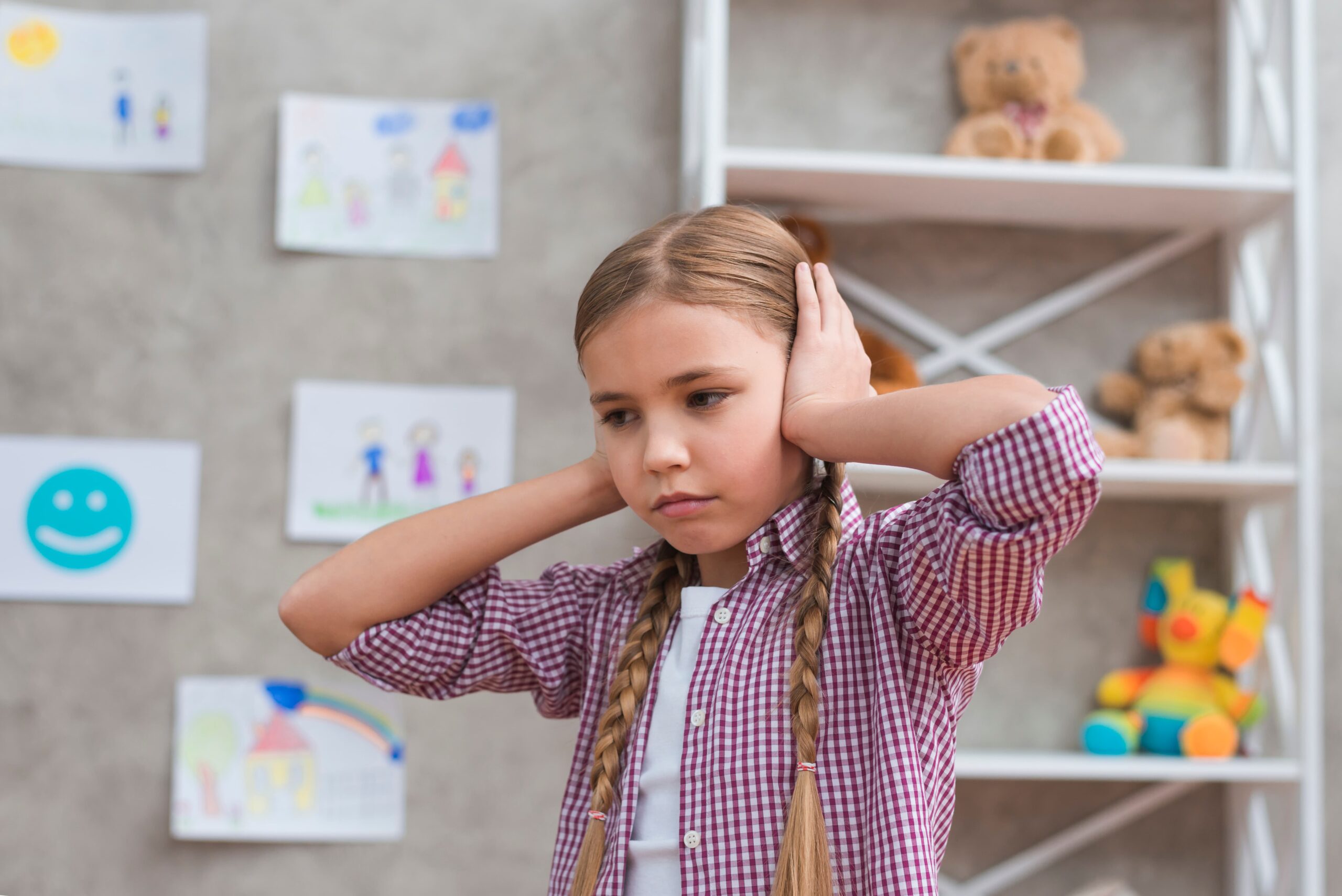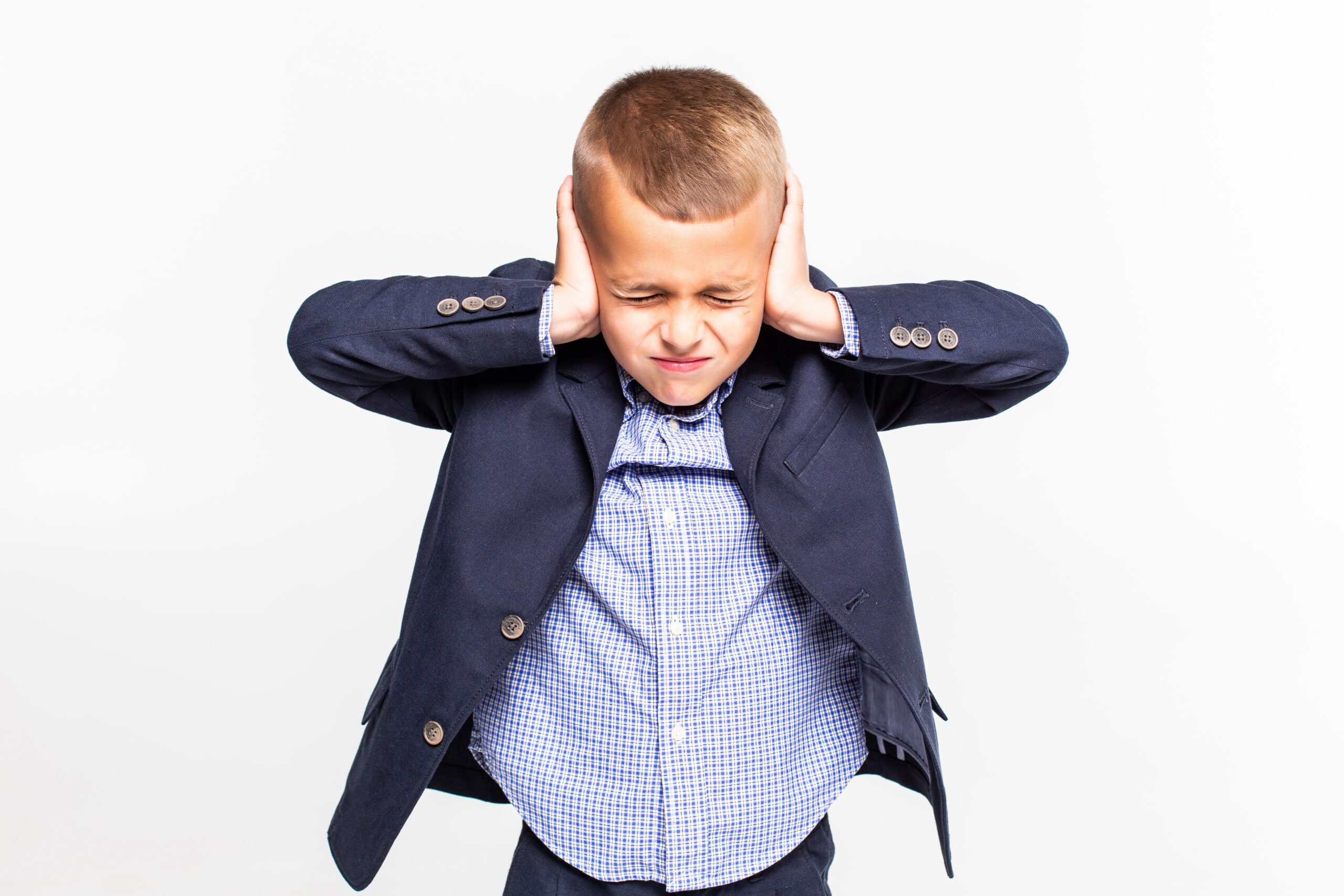Key Points:
- Overstimulation in autism arises when sensory input exceeds processing capacity, triggering distress and shutdown.
- Common signs include irritability, withdrawal, meltdowns, and avoidance.
- Effective strategies include sensory schedules, predictable environments, safe zones, and gradual exposure.
- Understanding how overstimulation affects behavior and learning empowers you to anticipate and reduce overwhelm.
- ABA therapy can support regulation, coping strategies, and behavioral resilience in autistic children.
Many parents, caregivers, teachers, or autistic individuals themselves have felt it: a moment when lights feel too bright, noise seems too loud, and emotions escalate quickly. This is often overstimulation in autism, a state in which sensory, emotional, or cognitive inputs overwhelm the person’s capacity to respond adaptively.
Understanding overstimulation in autism, what it looks like, how it affects daily life, and what can be done, is critical. In this article, you’ll find a clear breakdown of symptoms, underlying mechanisms, effects on behavior and learning, and practical strategies. The goal: after reading this, you’ll feel more confident recognizing overstimulation in autism and taking steps to prevent or recover from it.
What Is Overstimulation in Autism?
Sensory Overload vs. Overstimulation
Overstimulation in autism often refers to sensory overload, but it’s broader. Sensory overload is one form (too many sights, sounds, touches). Overstimulation also includes emotional, social, and cognitive input that surpasses what the nervous system can comfortably process.
When the brain receives more stimuli than it can filter or regulate, stress responses kick in. This leads to distress, agitation, or shutdown. Over time, repeated overstimulation can erode resilience, making smaller triggers harder to tolerate.
Why Autistic Brains Are More Vulnerable
Autistic individuals often experience:
- Differences in sensory processing (e.g. hypersensitivity to textures, sounds, lights).
- Challenges in filtering or gating irrelevant stimuli (difficulty tuning out background noise).
- Slower recovery from sensory input (it takes time to “reset”).
- Reduced tolerances for unpredictability or rapid changes.
These characteristics make the threshold for overstimulation lower than what non-autistic individuals might experience.
 Symptoms of Overstimulation in Autism
Symptoms of Overstimulation in Autism
Recognizing overstimulation early can help intervene before things escalate. Here are common signs.
Emotional and Behavioral Indicators
- Irritability or quick temper – becoming easily annoyed or frustrated over minor things.
- Meltdowns or emotional outbursts – crying, yelling, aggression, or tantrum behaviors.
- Shutdown or withdrawal – silence, non-responsiveness, hiding, or retreating.
- Clinginess or seeking reassurance – needing extra support, wanting to leave a location.
- Avoidance behavior – refusing to go to places or participate in previously enjoyed activities.
Physical and Physiological Signs
- Covering ears, closing eyes, or turning away.
- Increased heart rate, sweating, trembling, or shallow breathing.
- Tension, restlessness, pacing, or fidgeting.
- Complaints of headache, stomach upset, or “too much” sensations.
Social, Communication, and Cognitive Signals
- Difficulty following conversations or processing speech.
- Repetition or scripting (repeating words or phrases) as a way to self-regulate.
- Reduced eye contact or withdrawing from social interaction.
- Mental fatigue – slower responses, confusion, difficulty focusing.
- Reverting to learned routines or rigid behaviors as a coping attempt.
How Overstimulation Impacts Daily Life & Learning
Understanding how overstimulation reverberates through daily life helps in planning supports.
Academic and Executive Functioning
When a child is overstimulated, their working memory and executive functioning suffer. They may:
- Be unable to process instructions or follow multi-step tasks.
- Seem forgetful or scatterbrained.
- Avoid classroom discussions or fail to engage.
- Regress in skills or appear to “shut down” mid-task.
Behavior & Emotional Regulation
Frequent overstimulation can increase baseline stress. Over time this may lead to:
- Heightened anxiety or mood difficulties.
- More frequent meltdowns or emotional dysregulation.
- Increased rigidity in routines as a defense mechanism.
- Sensory-seeking or sensory-avoiding behaviors intensifying.
Quality of Life and Social Interaction
Overstimulation may cause a child to:
- Avoid noisy or crowded places (shopping malls, parties, assemblies).
- Become socially isolated or reluctant to engage in extracurriculars.
- Suffer from fatigue or exhaustion after a typical day.
- Face misunderstanding from peers/adults who misinterpret behaviors as willful defiance.
Why Early Detection Matters
Catching overstimulation early helps in preventing escalation (meltdown or shutdown). Early detection and intervention can:
- Reduce the frequency and severity of behavioral escalations.
- Support emotional resilience over time.
- Help the child learn self-regulation and coping strategies.
- Improve communication and relationships by reducing misinterpretation.
Practical Strategies to Prevent & Manage Overstimulation
Below are evidence-informed and pragmatic strategies you can apply at home, in school, or in community settings.
1. Sensory Planning & Predictability
- Create a sensory schedule: integrate planned sensory breaks (e.g., 5 minutes of quiet or deep pressure).
- Use visual supports (charts, timers) to show transitions.
- Prepare the child beforehand when changes or new places are expected.
- Choose quieter times for outings, or arrange visits before or after peak hours.
2. Environmental Modifications
- Use soft lighting or dimmers; limit fluorescent overhead lights.
- Reduce ambient noise (white noise machines, noise-canceling headphones, carpeting).
- Provide calm zones or safe spaces with low stimulation (soft textures, neutral colors).
- Offer sensory tools on hand (fidgets, squeeze balls, weighted lap pads).
3. Gradual Exposure & Desensitization
- Slowly introduce mildly challenging sensory stimuli, in short, controlled exposures.
- Use “safe levels” first, then increase duration or intensity gradually.
- Pair exposure with a preferred activity or reward to reinforce positive experience.
- Monitor signs of discomfort; stop or back off when stress appears.
4. Teaching Self-Regulation Skills
- Use deep breathing, box breathing, or other simple breathing exercises.
- Teach body scanning or “check in with my body” routines (ask: “What is hurting/stretching me?”).
- Introduce anchoring strategies: e.g. carrying a tactile object or a wearable to self-soothe.
- Use social narratives or scripts to explain how to ask for breaks or space.
5. Collaborating with Educators & Therapists
- Share the child’s sensory profile and triggers with teachers, aides, therapists.
- Recommend environmental accommodations (quiet zones, preferential seating, breaks).
- Suggest a “cool-down area” or quiet space in classrooms.
- Build a communication plan: signals or cards the child can use to request a break.
6. Post-Overstimulation Recovery Protocol
- Recognize when the child is in meltdown vs shutdown and respond differently.
- For meltdown: provide space, minimal demands, calm support, simple language.
- For shutdown: offer gentle prompts, low stimulation, patience, and slow encouragement.
- After regulation, debrief (if possible) to discuss what triggered the overstimulation and what helped.
Case Examples & Sample Applications
Scenario A: Lunchroom Overwhelm
A student’s school cafeteria is bustling—noise from trays, voices, clattering dishes. Mid-way through lunch, the student begins covering ears, walking away, tearing up, then refusing food.
Interventions:
- Use noise-canceling ear defenders during lunch.
- Break the student’s lunch into quieter “mini-lunch” slots outside the cafeteria (e.g. in a calm room).
- Pre-teach the lunchroom schedule or crowd flow.
- Provide a signal to staff when the student needs to leave early.
Scenario B: Shopping Trip Meltdown
During a grocery store visit, bright lights, announcements, crowded aisles, and harsh music overwhelm the child, and a meltdown ensues near checkout.
Interventions:
- Shop during off-peak hours.
- Use a predictable route and make a visual shopping map in advance.
- Let the child bring calming objects or noise-cancelling headphones.
- Practice brief trips first (e.g. only 3 items) to build tolerance.
Common Misconceptions & Clarifications
“They Should Be Able to Just Ignore It”
Suggesting an autistic child should simply “tough it out” is misunderstanding the neurological basis of overstimulation. This is not a matter of willpower.
“All Autistic People Experience Overstimulation”
While many do, each person’s sensory profile is unique. Some may be hyposensitive (under-stimulated) in certain modalities, or have mixed sensitivities.
“Avoidance Means They Aren’t Challenged Enough”
Avoidance or refusal is often protective. Pushing past the threshold repeatedly can worsen regulation over time.
Monitoring Progress & Adjusting Approaches
- Keep a sensory diary; record environments, stimuli, duration, and responses.
- Identify thresholds: when mild discomfort escalates.
- Adjust supports gradually; if an intervention seems ineffective, shift or scale it.
- Involve the child (when able) in selecting their coping tools or strategies.
- Regularly revisit and revise plans as the child grows, develops, or learns new skills.
 When to Seek Professional Support
When to Seek Professional Support
If overstimulation episodes are:
- Frequent and intense despite supports,
- Causing regression or interfering with learning and social life, or
- Linked with comorbid conditions (anxiety, ADHD, etc.),
then collaborating with specialists (behavior analysts, occupational therapists, psychologists) is advisable. These professionals can evaluate sensory processing profiles, design individualized plans, and offer therapeutic interventions.
Applied Behavior Analysis (ABA) therapy is one such approach. Properly structured ABA can help teach self-regulation skills, coping strategies, and adaptive responses to sensory stressors over time.
Support Regulation Through ABA Therapy
Overstimulation in autism arises when sensory or emotional inputs overwhelm one’s processing and regulatory capacity. Recognizing its symptoms, such as irritability, meltdown, shutdown, avoidance, or physical tension, is a crucial first step. Overstimulation affects learning, behavior, social engagement, and emotional well-being.
Yet, it is not insurmountable. With thoughtful sensory planning, environment modification, gradual exposure, and skill-teaching, one can reduce the frequency and severity of overstimulation episodes. Monitoring, adapting, and seeking professional support strengthen the child’s resilience over time.
By knowing what to watch for and how to respond proactively, caregivers and professionals can greatly improve the daily experience and stress outcomes for autistic individuals.
Begin supporting your child’s ability to manage overstimulation with evidence-based intervention. Steady Steps ABA provides ABA therapy in Maryland designed to help children build self-regulation, coping strategies, and adaptive behavior in real settings. Whether your child struggles with sensory overload in school, social situations, or daily routines, Steady Steps ABA works collaboratively to reduce distress and promote smoother functioning. Reach out today to explore how we can help your child in Maryland build resilience against overstimulation and thrive.





